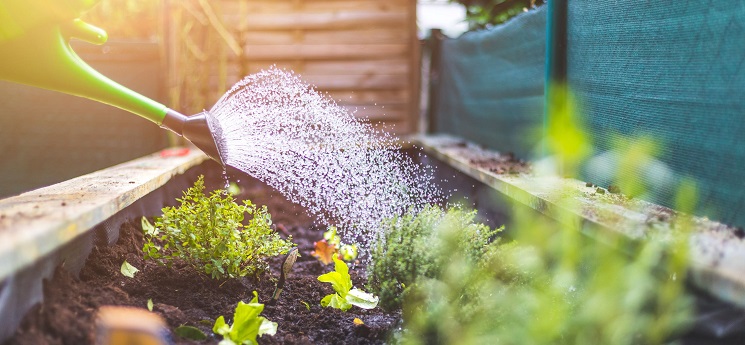Depending on where you live in Australia, you’ve either finished your dry season and entered your wet, finished your wet and entered your dry, or if you live somewhere like Sydney, which is fairly consistent across the seasons, you’re likely to be getting your usual dose of 80 or so millimetres a month.
Such is the diversity of Australia’s geography and climate that a one size fits all approach just doesn’t work when it comes to irrigation. It’s vital to tailor your watering efforts not only to the plants being grown, but to the weather patterns that prevail in your neck of the woods during winter.
Now that the cooler weather is on its way, gardens won’t lose as much water to evaporation as they do in summer. Because of this, soils can easily waterlog if overwatered, particularly on the southern side of homes and in well-shaded areas.
If you have an automatic watering system, during these cooler months reduce the watering time to at least half that of summer.
We asked Marcus Eyles, horticultural director of Dobbies Garden Centres, to clear up any confusion.
What’s the advice for watering plants in your garden as the weather gets cooler?
Mr Eyles says the easiest way to check the area around your plants is to see if the paving or border is wet, then stick a finger in the top of soil: “If soil is dry then give a moderate water, but avoid overwatering as too much will do damage,” he says.
Read more: Gardening on a budget
What other things should people do to keep their outdoor plants alive when it’s cold outside?
“When planting, check the hardiness rating of your plants for the area of the country that you live in, and make sure it’s a suitable match,” suggests Mr Eyles. “Keep an eye on changing temperatures too, during the day and night.” If the plant won’t tolerate much frost or heat, then Mr Eyles says you should bring it into a protected or covered place, like a greenhouse, porch or conservatory.
“If you can’t or its planted in the ground, then use frost protection fleece,” he adds. “Very cold winds are most damaging to evergreen plants as it burns the foliage.”
Are there any actions you should take when it snows in your garden?
“Snow protects and insulates plants roots, but it can cause damage to evergreen plants due to the weight of the snow,” says Mr Eyles, who adds, “use a broom to knock the snow off to prevent this.”
Are there any other odd jobs you recommend people do in the garden in the winter months?
“It may not be the natural time you’d think to head outside and do some gardening, but there is still plenty you can be getting on with,” says Mr Eyles.
Mr Eyles says a few tasks include looking after wildlife by creating safe places to shelter, winter pruning of shrubs and trees and removing debris such as fallen leaves and snow off lawns to stop dead patches. “Winter gardening has a quieter, slower pace to it, which I think we can all learn to enjoy,” he concludes.
The best time to water
Something as simple as the time you water not only saves water, it also provides greater benefit to your plants.
The best time to water is in the early morning or the evening, when cooler temperatures will greatly reduce the amount of water lost during watering through evaporation. Watering at these times will ensure better penetration into the subsoil around the root systems.
Cut down on water waste
The best thing for reducing water waste in the garden? Mulch.
Organic mulch helps to seal moisture in the soil and reduces evaporation loss. The added bonuses are weed control, improving the appearance of your garden, and adding nutrients to your soil.
Read more: How to choose a quality compost that’s right for the job
If the ground is dry, water deeply before applying your mulch. A 7-10cm layer is ideal.
When planting new additions to the garden, raise the soil slightly to form a ‘moat’ around the base of the plant as this will help to prevent water run-off and direct it down towards the roots where it is needed.
Soil conditions
The condition of your soil has a lot to do with how much you need to water. Sandy soils don’t hold water well, and a crust may form on the surface, which can reduce water penetration. Digging through some compost will help water retention and drainage, providing a healthier soil in which your plants can grow.
In clay soils the opposite is true as the soil holds the water too well and drainage can be an issue. Heavy clay soils will require the addition of some gypsum and organic material to develop good soil structure (and hence porosity and drainage) over time. Another alternative for heavy clay soils is to grow your plants in raised beds.
Read more: Beginner’s guide to a DIY raised garden bed
Do you continue to garden throughout winter? Have you added mulch to your soil?
– With PA
If you enjoy our content, don’t keep it to yourself. Share our free eNews with your friends and encourage them to sign up.



